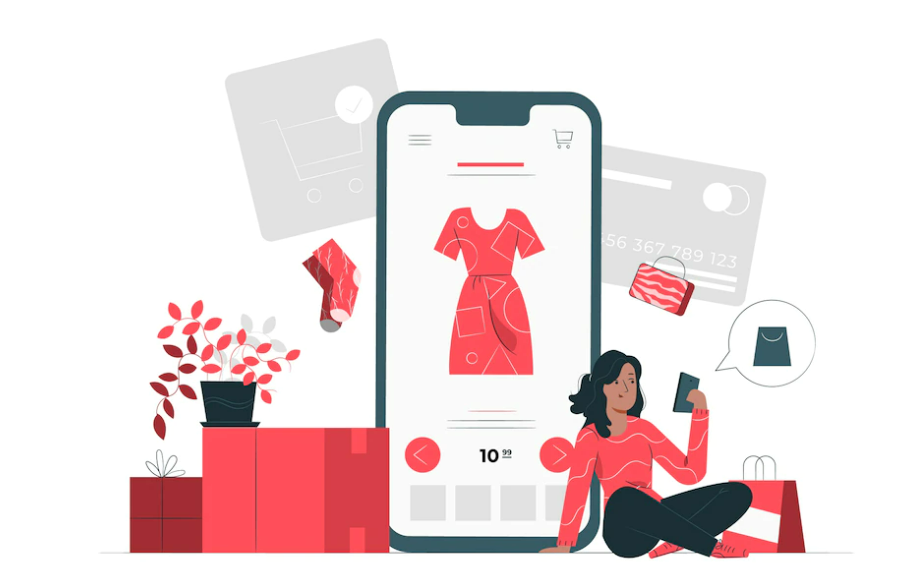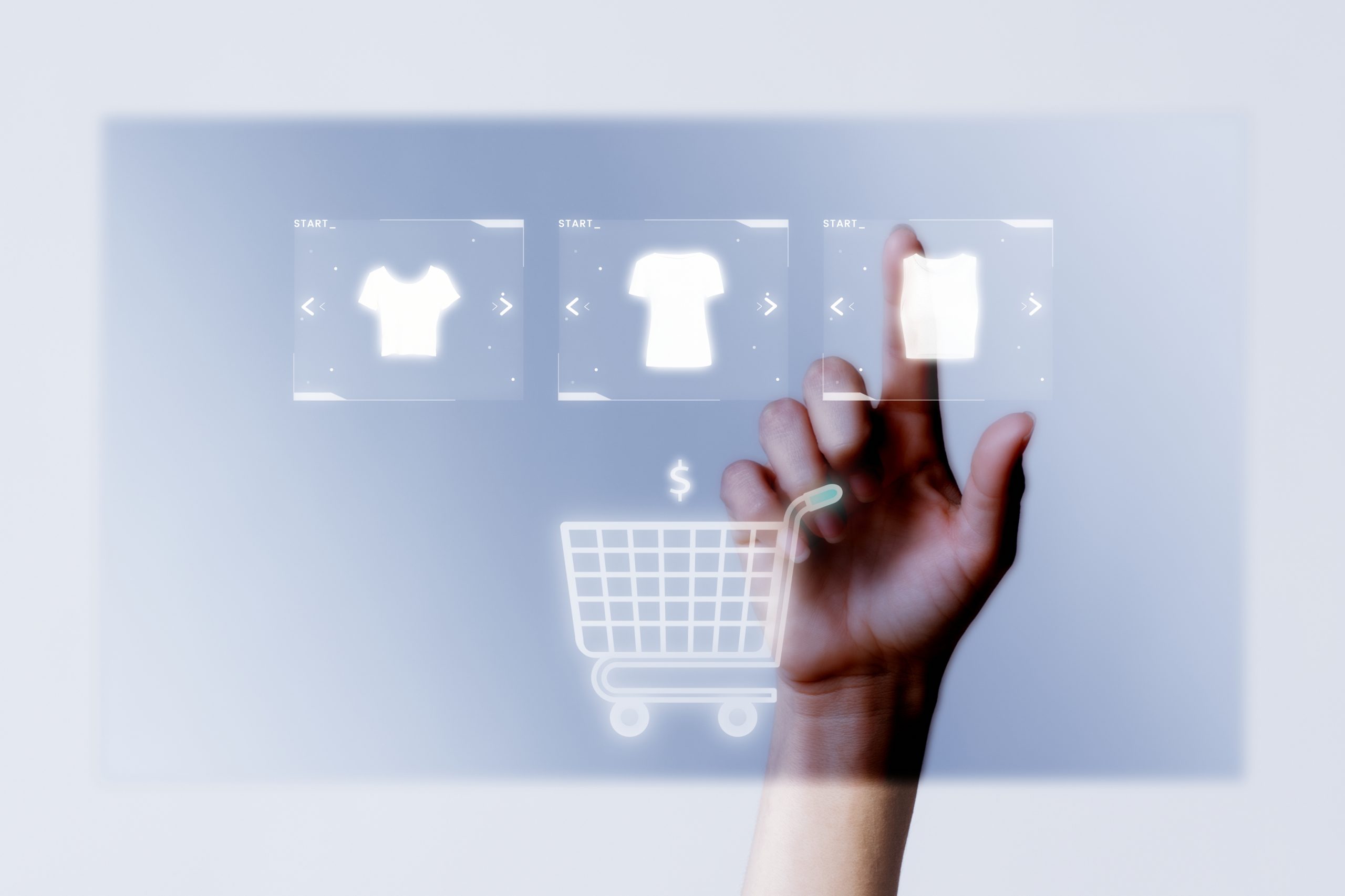Introduction
Social media snowballed amid the Covid-19 pandemic, creating a global market of around 89 billion Dollars in the year 2020. It is estimated that the social commerce market will be around 600 Billion Dollars by 2027.
It is a fact that social commerce was one of the main features that helped brands sustain through the pandemic economic slowdown. We can see brands using social media effectively to spread their brand awareness, advertise, and build relationships with their audience.
Adding a step further, social commerce allows brands to sell their products directly on social media platforms like Facebook, TikTok, Instagram, Pinterest or other social apps where their target audience are active on.

Social commerce can be defined as a strategy brands use to market and sell their products through social media platforms. Social media platforms also have brought in many features that help brands establish their in-app stores and make sales seamlessly.
Though social media platforms enhance their features every while, the content that brands produce will help them influence the audience and persuade them to convert into customers. Influencer marketing and video shopping are the two most essential content means through which brands can spread their brand awareness and organically reach the audience.
This article will dive deeper into the platforms and features that make social commerce possible.
Are social commerce and e-commerce the same?
E-commerce is an umbrella term that covers the economic activity of buying and selling goods, products, or services over the internet. Social commerce is the economic activity in which brands sell products directly to their potential customers through social media. That makes social commerce a segment of eCommerce.
Social commerce allows brands to establish their in-app store within social media platforms, making it easy for people to buy the product at the right moment.
In-app store and In-app checkout ultimately reduce the friction or churn out, as people now need not search for the brand or product again on the merchant website or e-commerce platforms.
Social commerce is changing the way people make purchases, as it provides an entire shopping experience, from discovering the product, knowing the reviews from peers, to researching and checking out process, everything happens on the same social media platform.

With social commerce, brands can set paid ads, and their ads will be displayed on the target audience’s social media feed, with a CTA of “shop now” or “buy now,” and the users can immediately complete their purchase right there in the app in real-time.
As most people spend time on social media, it becomes easy to understand the audience’s pulse; and brands need to use these digital platforms to their advantage and business growth.
Why should brands care about social commerce?
As mentioned before, people spend many hours on social media, which is definitely influencing every purchase they make from household utilities, fashion, furniture, lifestyle, etc.
Social commerce has made audience targeting much easier for brands as they get to understand them in-depth with the analytics of the type of content they consume. It helps brands produce the right shoppable content, show it to the right audience at the right time, and make the maximum sales.
Social commerce comes with an abundance of benefits, and we have listed a few reasons why brands need to try social commerce without fail.
Consistent audience growth
With social media users growing daily, the target audience and brands’ customers will also grow mutually.
Authentic engagement and traffic
When the potential audiences are targeted with good shoppable content consistently, it will result in users engaging with the brand, through which brands can effectively maintain their customer communication smoothly.
Customer loyalty and retention
As social media allows brands to maintain customer engagement perfectly, they can seamlessly build and maintain a good relationship that deepens trust and loyalty.
Social proof
Loyal customers who are satisfied and happy with the brands will more likely express their feedback on their social media accounts or add a comment on the brands’ shoppable content, which can be used as social proof to promote the products. With social media word of mouth, audience building and engagement are growing multifold.
Analytics, metrics and audience research
With social media, it is easy to study the movement of the targeted audience. Brands can research and produce content that is aligned with their target audience’s interests and trends. Brands can also analyse, measure and evaluate the performance of their social media content and campaigns quickly, as most social media platforms come with ready metrics of impressions, engagement and reach.
Social experience
The audience can communicate with their brands in real-time, discuss the products with their family/friends or know the previous buyers’ experiences; this interactive way of shopping makes it a social experience.
Zero friction in the customer journey
Social media builds a space where there is no friction in the customer journey, making it a smooth flow for the customers from discovery to the checkout of the products.
Space of Millennials and Gen Z
Social media is the modern mall, and this is where today’s generation spends most of their time. Brands can easily target audiences based on demography and build their content accordingly.
China has been a pioneer in social commerce since the early 2010s and Forbes has estimated that live-streaming social commerce has nearly accounted 12% of China’s total retail sales in 2021. Though social commerce strategy remains relatively new to the western market, Businesses in the US and Europe has now keenly started experimenting and exploring this new marketing technology.
Social commerce contributes to nearly 4.3% in 2022 to the total e-commerce sales and Facebook is the most successful social commerce platform currently in the US.
Social Commerce and Social Media Platforms
Social media platforms are the backbone of social commerce. Brands can leverage social media platforms in various ways. Here are the key features and functionalities that can support brands efficiently growing their sales via social media platforms.
In-app store
Rule-based chatbots use a decision tree flow method to guide users by asking follow-up questions and answers to provide information. The structure of interaction, keywords, follow-up questions and answers all are pre-defined.
Shoppable organic posts
Social media platforms should allow users to shop directly from the social media posts, videos, stories, reels, pins or carousels. With social media posts, an icon, label, or CTA button should be there to take the user to the checkout space.
Branded influencer content
Influencers can share shoppable posts by tagging the products in their feed posts or stories.
Live shopping
Live shopping merges live video and social commerce. Brands can organise Livestream product displays, where they can create fun-filled, interactive live content where viewers can directly buy from the live stream.
Shoppable paid ads
Paid ads are displayed in users’ feeds; if they like the product, they can click the CTA and buy it directly.
Messaging
A messaging feature on the product page can make the user experience more smooth. Like in a physical store, customers ask store assistance for help, in social media, there should be an option to DM the brand from the product display page.
Sharable user-generated content
Social media profiles should allow the users to tag the brands and products they purchased on social media, and that content should be shareable by the brands they have tagged. It will help users get features on the brands’ page, which increases customer loyalty and engagement.
Automated Engagement Systems
It will be handy to maintain high engagement rates and solve customers' queries as soon as it arises with AI chatbots integrated into the social media DM features. It will support multiple functions like replying to users' questions, collecting leads, drafting the customer journey, accepting purchases, closing deals, etc.
Facebook was the first social media platform that allowed brands to create in-app shops. It changed the way social commerce work totally. It was followed by Pinterest and Instagram, and recently, TikTok also introduced its shop feature.
On Facebook, brands can create a Facebook shop and add their products to it. From the profile page of the brands, users can be directed to the shop page, where they can browse product collections, view descriptions, check offers, save products to a wishlist, add to a cart, place an order and message the brands if they have queries.
On Pinterest, brands can upload their product catalogue. They can apply for Pinterest’s verified merchant program and build a shop tab on their profile. If brands run their store on Shopify, they can integrate their Shopify account with their Pinterest profile.
With Instagram, brands can create their storefront and allow users to access it from their profile page. Brands can share shoppable content in images, videos, stories, reels and live videos. When collaborating with influencers, Instagram allows the influencers to tag and showcase the paid partnership between the brands and influencers.
TikTok
TikTok recently enhanced its platform to implement social commerce capabilities for the brands. Like Pinterest, Brands can integrate their Shopify account with TikTok. They can also add a Shop tab to their profile and sync with the product catalogue. Like Instagram, brands can here also post shoppable content and allow the users to make a purchase easily.
How can DMG support businesses with social commerce?
When it comes to successfully executing social commerce strategy, brands need to follow long processes and many procedures. From creating content, scheduling to post them, looking after the collaboration, research on the target audience and competitors and engagement and reach analysis to building and maintaining the in-house store, product photography, descriptions, KPI, and sales analytics – the number of work that goes in the backend is high.

DMG can help brands seamline these processes into a defined automated digitalised system. It will make the process in the backend more progressive with less human interference at a lesser cost. Like an automated social media calendar, automated DMs, email schedules, and chatbots for engagement and 24/7 customer support.
DMG has years of experience in creating immersive 3D, AR and VR content. Today, immersive content is one of the best selling points that can positively persuade users to buy the products and services. We can also support brands in creating their products’ 360-degree digital twins, which will be excellent eye-catchy content for their social media posts and advertisements.
Stepping into social commerce?
Businesses need to be omnipresent in every channel, where they can effectively build a connection with their target audience. Social commerce can be a nascent medium today, but it won’t take a long time to grow into a mainstream sales medium soon.
Social commerce can help brands build their community, earn customer loyalty, and increase the retention rate, sales and revenue. It also helps them establish brand awareness and reach a new audience daily.
So, now is the right time for brands to leverage social commerce as soon as possible and enjoy explosive growth.
DMG can stand strong with the brands, supporting them in the backend with processes and also in creating immersive, highly salable social commerce content.
If you are ready to provide a smooth shopping experience to your customers, fill out the form below and let’s discuss how effectively and seamlessly you can build your social commerce strategy!
